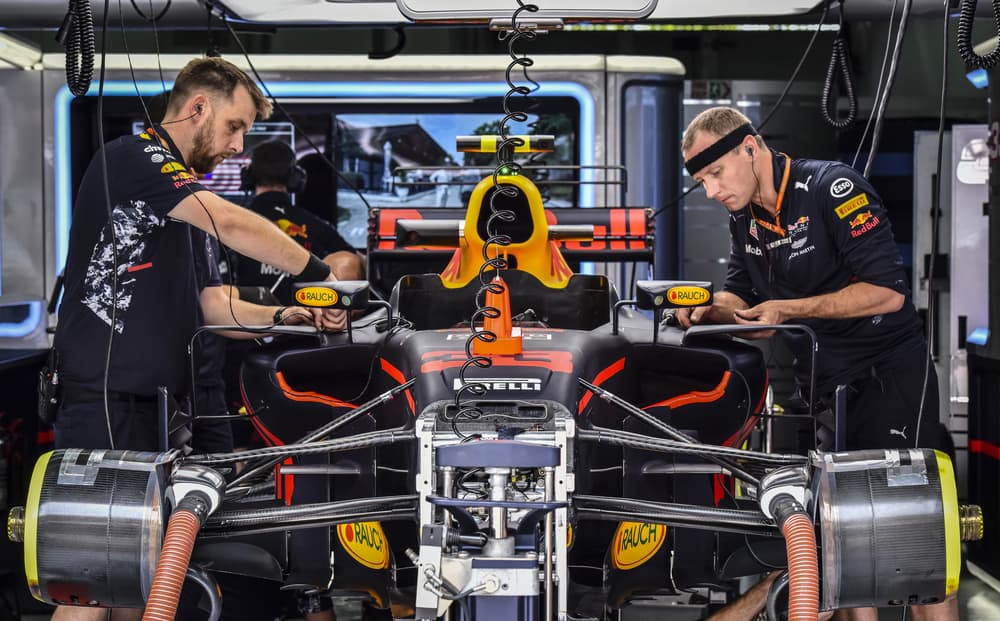
In the United States, there are a number of different options for training. Anyone who wants to learn how to ride a bike is most likely to start with the basic rider course. Taking the course is a great way to understand your skill level and what to expect while riding. Five key points are highlighted in the course, including wearing protective gear and not using drugs. The school also offers additional courses that will help you improve your riding skills.
Finding a job as a Harley Davidson mechanic
It might be worth looking into a school that teaches motorcycle repair if you wish to work on Harley-Davidson motorcycles. Harley-Davidson mechanics are highly skilled professionals who can specialize in a range of services. These professionals work in a shop environment and are surrounded by state-of-the-art machinery. Additionally, they need to be able troubleshoot and work well under stress. A Harley-Davidson mechanic makes around $63,676 per year, and can have a variety of exciting career choices.

Many factors are important in securing a job working as a motorcycle mechanic. For starters, you'll need training and certification. You can find a Harley-Davidson school in your area by checking out the vocational schools. These schools offer many degrees, including motorcycle mechanic certification. In order to obtain a high school diploma, and pass English and math placement exams, you will also need a high-school diploma. You can find a Harley-Davidson mechanic school that will provide support and encouragement for your learning.
Reputable schools who train Harley-Davidson mechanics
There are many schools that teach motorcycle mechanics around the globe, but not all are equal. Reputable schools will provide hands-on training as well as specialized training with top motorcycle manufacturers. It will provide the foundational knowledge you need to become a professional in the motorbike industry. A Harley-Davidson University Ph.D. in mechanics is available if you continue working in their service department.
Although there are many Harley-Davidson motorcycle repair schools to choose from, each school has its own curriculum. While some schools focus on general repair, others focus on Harley-Davidson or small-engine motorcycles. Some courses may even include an electrical component. You will be able to learn the basics of Harley-Davidson and other types motorcycles from most schools.
How to become a Harley-Davidson mechanic
If you have dreamed of owning a Harley and are interested in becoming a Harley mechanic, As a Harley-Davidson mechanic, you'll be well-versed in the diagnosis and repair of the bikes. This job prepares for a variety in service careers and may lead to employment as a Harley-Davidson dealer. Those seeking to become Harley mechanics must have a high school diploma and pass math and English placement tests, and they often have to complete developmental courses.

After completing a college degree, you can apply for a job with a Harley-Davidson company. To work for Harley-Davidson, you will need to complete a vocational or technical school. Also, you will need to have a license. Many auto companies offer specialized training that will help you keep up to date with changing technology.
FAQ
Are you looking for a career as an automotive mechanic?
For those who are passionate about excellence, automotive is a rewarding industry. Working hard and learning from others is the best way to be successful in this field.
Communication skills are important as customers and coworkers will often be your main focus. You should also be willing to travel and work long hours, making commuting difficult.
Take classes at community colleges or universities if you're interested to work in automotive. Many schools offer programs for students who are interested to learn about auto sales, customer service, or repair.
Mechanical engineering is a good choice if you are interested in pursuing a degree. A bachelor's degree can be obtained in four years.
Many employers will hire graduates straight out from school. Therefore, it is a good idea to look for employment while still pursuing part-time studies.
After you complete your education, you may need to undergo some type of training before you can become an automotive technician.
This means that you will need to pass tests such as the Automotive Excellence (ASE) certification exam. This test covers topics like engine maintenance, brakes system, suspension, and many other subjects.
After passing the ASE test you can apply for a National Institute for Automotive Service Excellence (NIASE) license.
A license allows you to perform repairs on vehicles owned by private individuals. In exchange, you'll receive compensation based on the number of services performed.
Not all states require licensing. If you intend to work in another state, however, you will need a license.
Some states won't issue licenses until you have completed a certain amount training. If this is you, you may need another option.
What qualifications do you need to be a mechanic?
A series of tests is required to be a mechanic. These include:
-
A test of general knowledge
-
Practical exam
-
An apprenticeship test
These tests are meant to help you grasp the fundamentals of mechanical engineering and physics, before you begin your journey as a mechanic.
Once you've passed these tests, you'll be eligible to work as a mechanic. You'll still need an apprenticeship. This will include training in the trade.
You'll need to attend classes and workshops to learn everything you need to know about repairing vehicles. Experienced mechanics will also be required.
To be a successful mechanic, you will need to have a high degree of concentration and attention. You'll need to pay close attention to every aspect of vehicle repairs.
To be a successful mechanic, you will need patience and perseverance. If you don’t enjoy following instructions, this might not be the right career path.
You could make a great career out of your love for cars and the work that goes into fixing them.
How long is an apprenticeship for an automotive mechanic?
An automotive mechanic apprenticeship takes around three years to complete. This includes two years in school and two as an apprentice. The first year is dedicated to learning the theory and practical skills of the trade. During this time, you'll also learn how to use tools safely and efficiently. You'll spend the second year in on-the-job training, where you will gain experience in various trades. You will have the opportunity for formal training during these years.
The last year of the program is dedicated to gaining certification and qualifications in the field. These include NVQs (National Vocational Qualifications), that are given after passing specific industry exams. The HNCs (Higher National Certificates), on the other hand, cover general subjects like customer service and management. Finally, there are City & Guilds certificates that are offered for those who wish to become qualified in certain trades.
What do I need to know about car mechanics?
Auto mechanics don't require any knowledge. Only you need to know how things work. It's why many people begin to fix things by fitting brake pads or changing tires.
You need to be able read and comprehend diagrams, follow written instructions and adhere to basic principles of good practice. You will also need to understand how parts should be replaced or repaired.
It's important to remember that you shouldn't attempt to repair vehicles without having received proper training and guidance. This is especially true for expensive components, such as transmissions and engines.
In fact, even though you won't need to know much about cars, you will need to thoroughly know the basics of mechanical engineering and physics. This is how you understand the mechanisms behind engines and brakes.
You should also be ready to handle all kinds of situations. For instance, you might find yourself in charge of a vehicle that has been in a serious accident. You will also need to be able to deal with accidents and breakdowns.
You must also be willing to learn quickly. You will need to be able not only to diagnose problems but also to perform simple maintenance tasks like tightening bolts and nuts.
Statistics
- The U.S. Bureau of Labor Statistics (BLS) reports that the job outlook for automotive service technicians and mechanics is expected to decline by 4% from 2019 to 2029. (indeed.com)
- According to the BLS, total auto technician employment is expected to exceed 705,000 by 2030. (uti.edu)
- 52% of Mechanics in the United States think their salaries are enough for the cost of living in their area. (indeed.com)
External Links
How To
How to properly diagnose your car for repair
You should first examine the symptoms your car is showing to determine if it requires repairs. Then, follow these steps to diagnose your vehicle properly.
-
Check engine lights. Make sure to check all dashboard indicators like the engine light indicator (oil pressure gauge), the battery indicator (battery light indicator), and the RPM indicator (rpm gauge). If they have been flashing for more days than usual, it could be a sign that something is wrong with the vehicle.
-
Inspect the tire treads. Tire wear can lead to problems in handling and brake performance. Also, inspect the treads of your wheels. They should be smooth and clean. You can do this by taking off the wheels. Use a flashlight to see how well the treads are worn.
-
Pay attention to the level of your brake fluid. You must always monitor the level of your brake fluid. This ensures that your brakes work properly. Low brake fluid levels can cause brake failure when you apply pressure.
-
The suspension system should be tested. Most vehicles have a suspension system that absorbs shocks and vibrations. It improves control and allows for smoother accelerations or decelerations. A suspension problem can cause your vehicle to feel wobbly and shake uncontrollably. To test whether your vehicle has a suspension issue, try putting weight on the front or rear axle and observe the movement.
-
Examine your steering column. The steering column connects the steering wheel to all other components of the vehicle. Sometimes, steering columns are damaged by accidents. It is recommended to replace any steering column that feels loose, or shakey.
-
Pay attention to the exhaust pipe. Exhaust pipes move gases from combustion chamber to atmosphere. If the exhaust pipe is damaged or leaks, harmful fumes can enter your cabin. It is also important to repair any bends in your tailpipe immediately.
-
Take a look under your hood. Check under your hood for any unusual or missing components. Fluids could be leaking from your engine. In addition, if you notice an unusual smell coming from your engine compartment, you should contact a professional technician.
-
You should inspect your air filter. The vehicle's outside environment may cause the air filter to collect dust and debris. A dirty air filter causes your vehicle to run poorly. Replace your air filter regularly.
-
Check the fan belt. Your vehicle's fanbel connects the engine and transmission. The engine will not turn if the fan belt breaks. Replacing the belt is simple. All you need to replace the belt is a screwdriver with pliers.
-
Check the radiator hose and hoses. The radiator hose is used to carry water from the radiator to your engine. It can cause hot liquid to leak onto the engine if it is damaged or cracked. To repair the leaky hose, all you need is a pair if needle-nosepliers.
-
Check the windshield wipers. Windshield wipers work by using electricity to remove rain and snow. They can leave streaks on your windows glass if they stop working. Change the washer fluid to fix the problem.
-
Check the battery cables. The battery cables provide power for the electrical systems in your car. Make sure you disconnect the negative cable before replacing batteries. Failure to do so can damage your alternator.
-
Check the headlights. Headlights illuminate the road ahead of you. Poor visibility can result if the headlights don't function properly. You can check the bulbs to make sure they aren't burned out.
-
Be sure to check the lights. You can warn other drivers if you approach them at night. You could be distracted and cause an accident if one does not work.
-
Make sure you check your brakes. Brakes slow down your vehicle before a collision. If they aren't working correctly, you could lose control of your car and crash.
-
Check the oil regularly. The oil keeps your engine well lubricated. It helps prevent metal parts from wearing out too quickly. It is recommended that the oil be changed every other month.